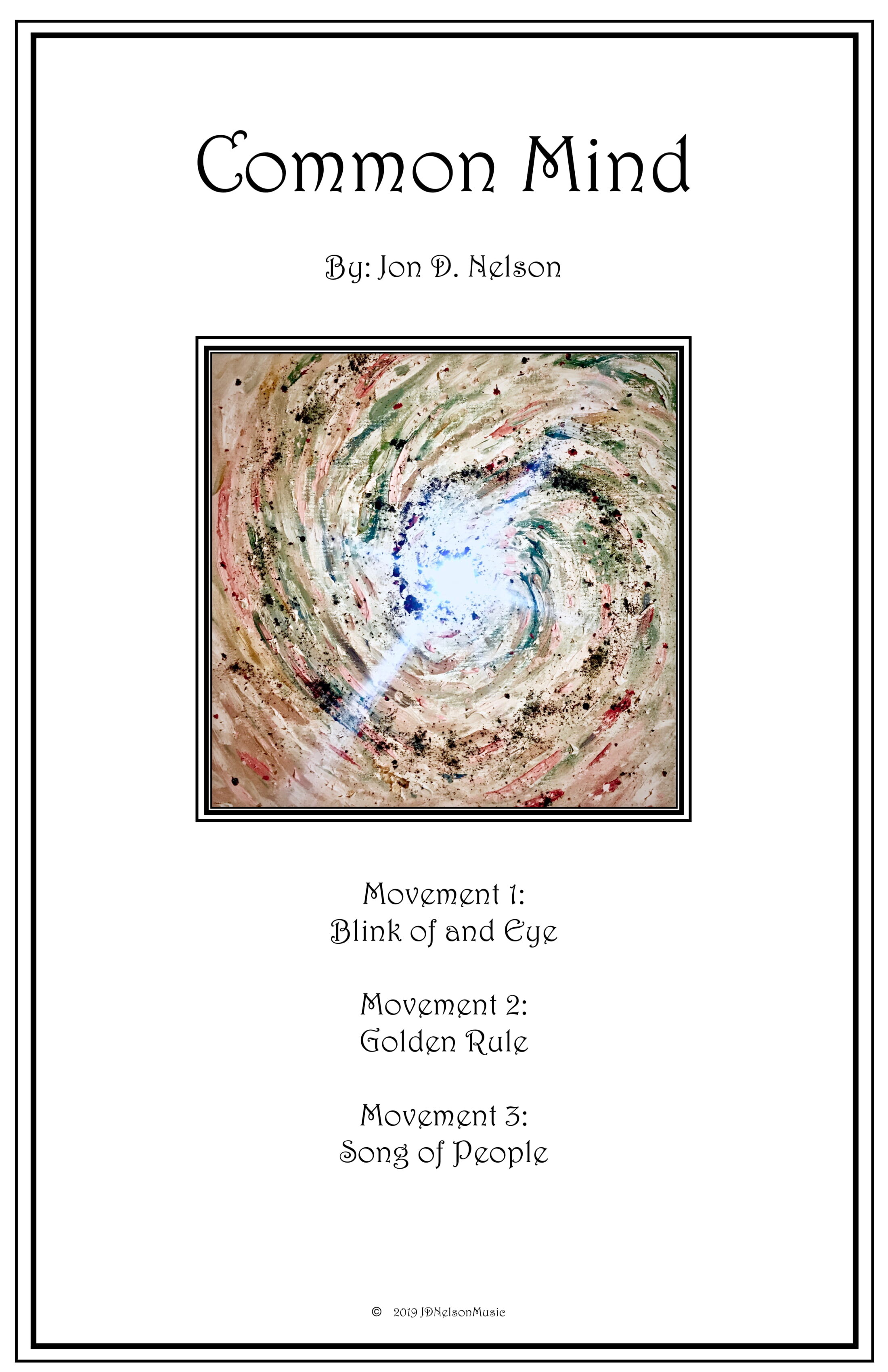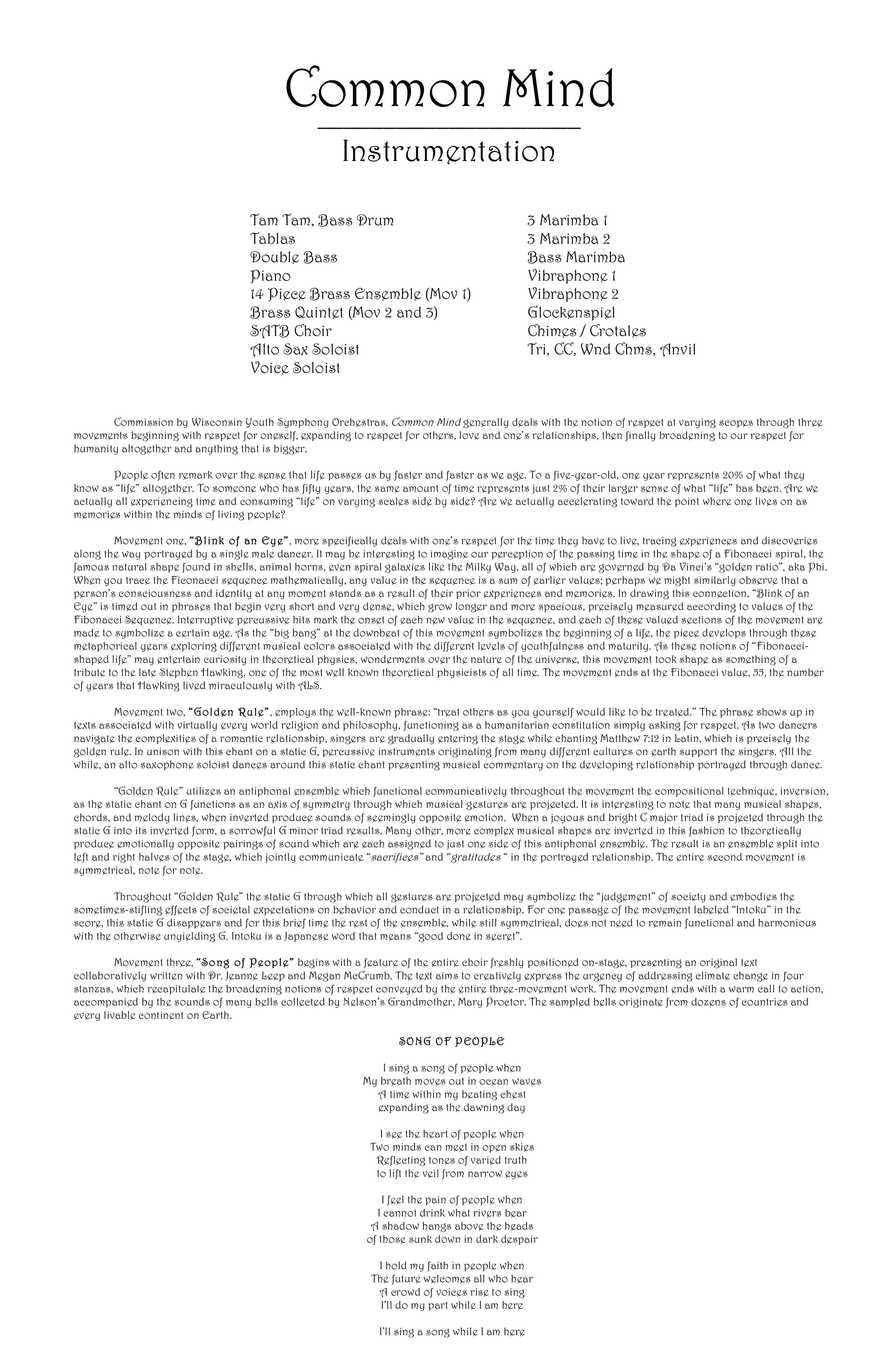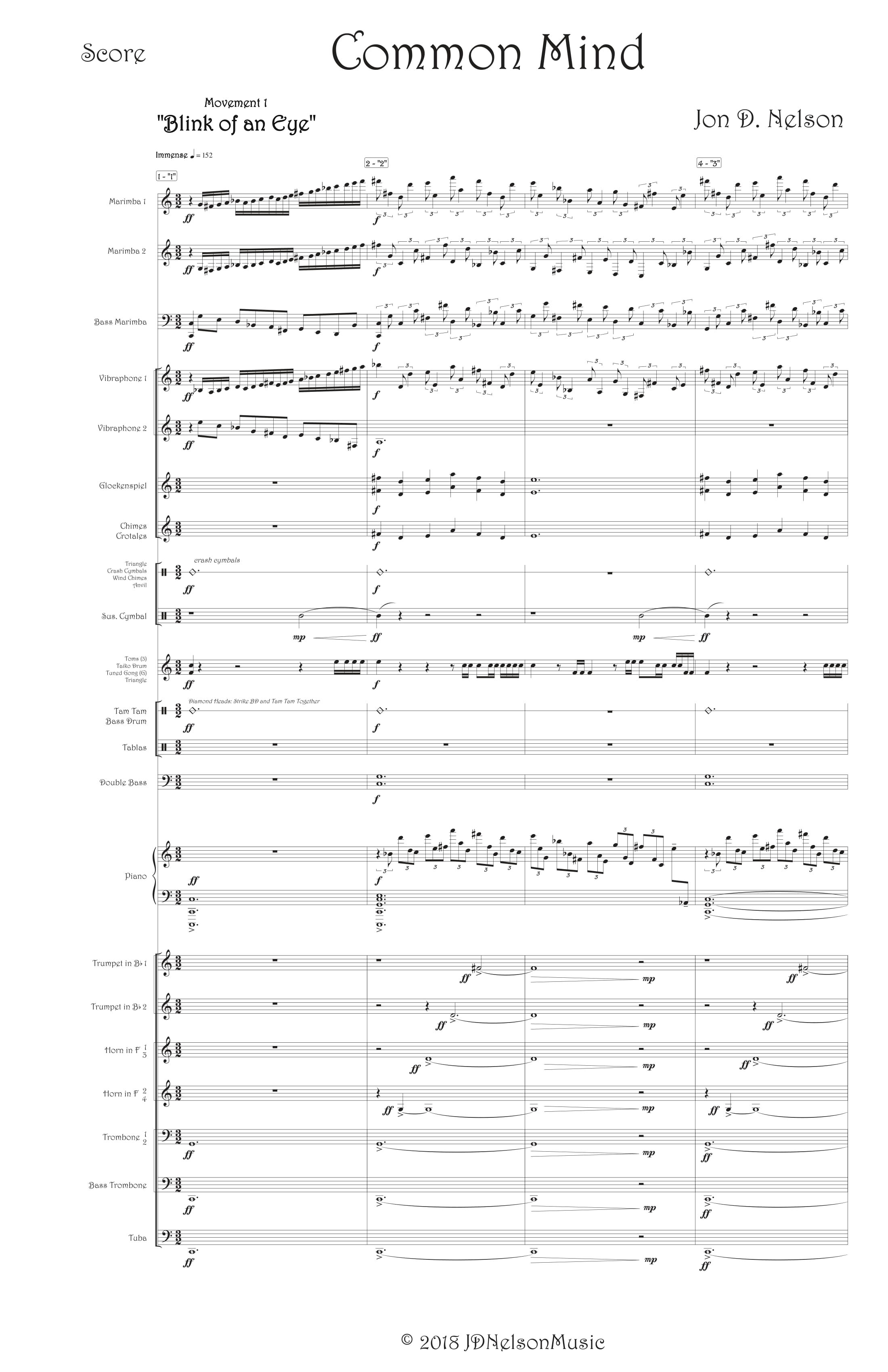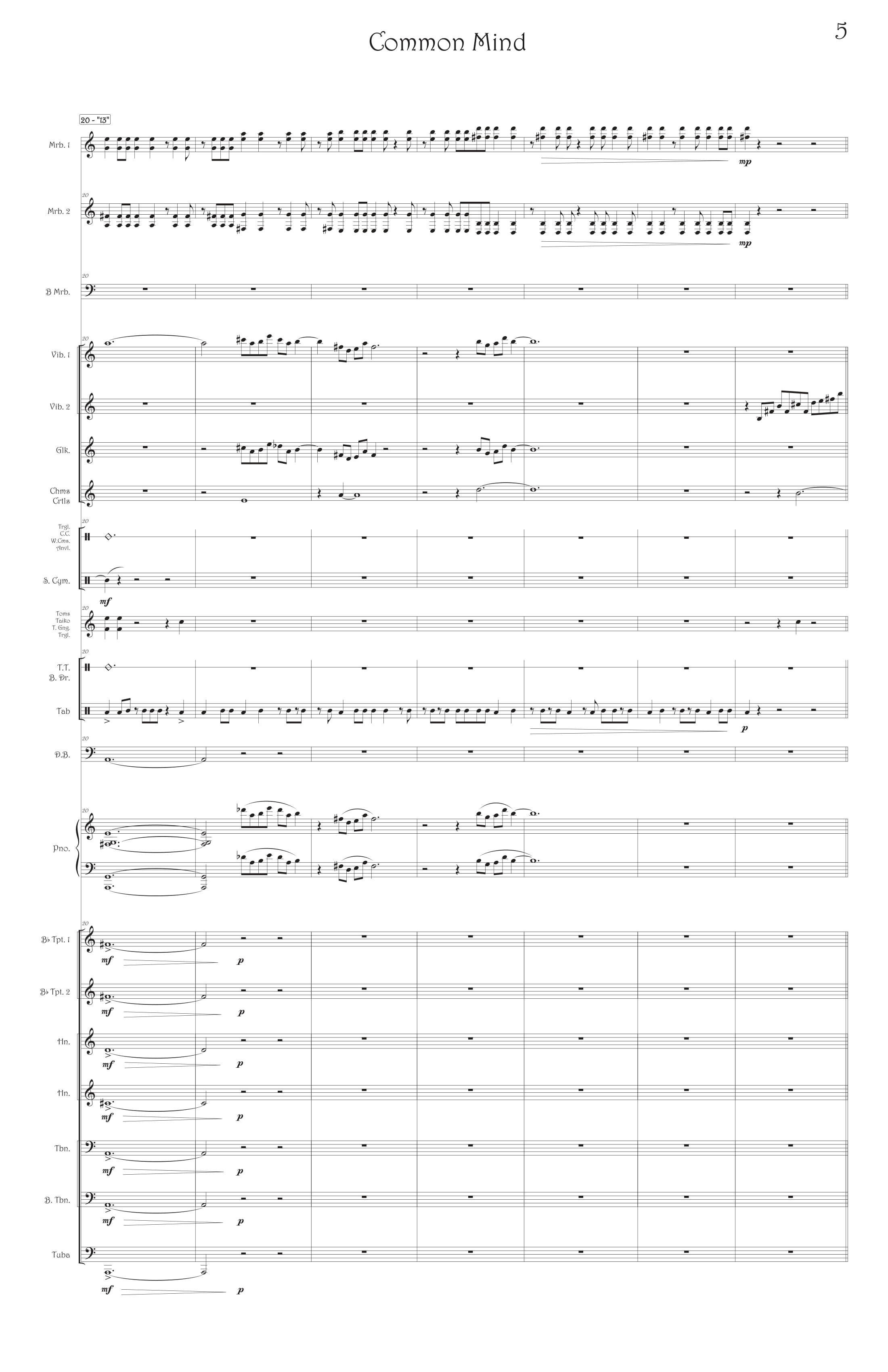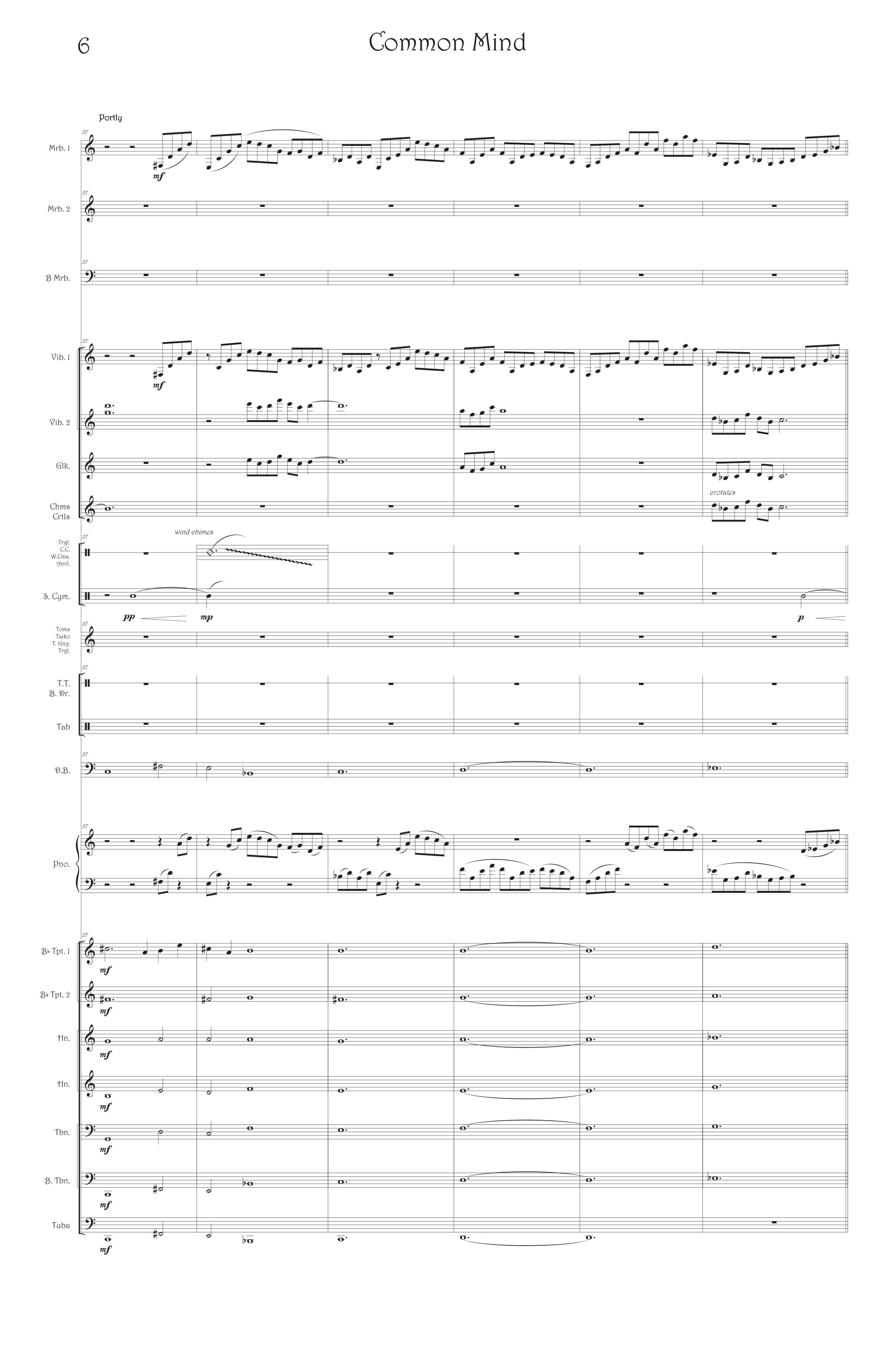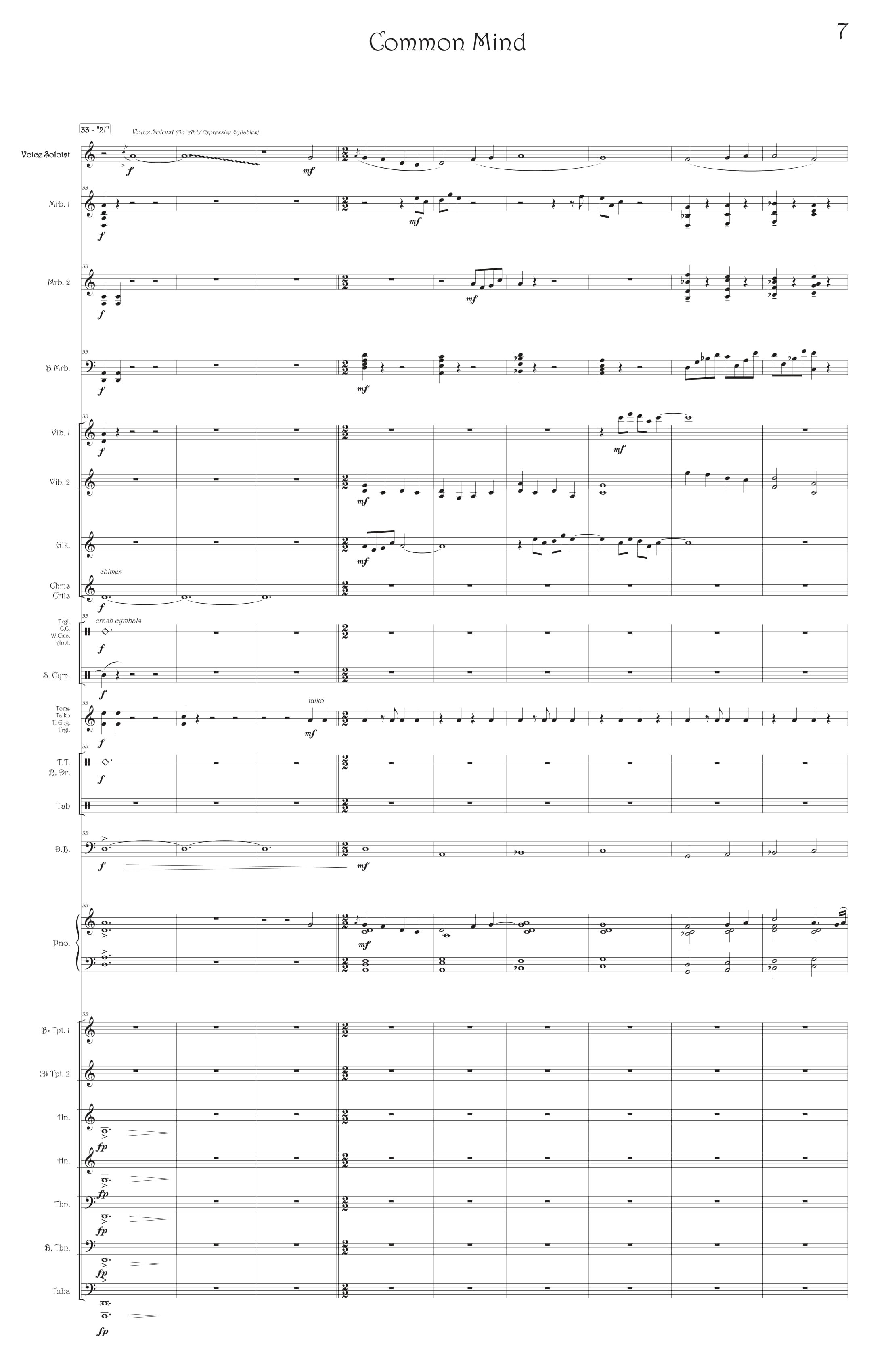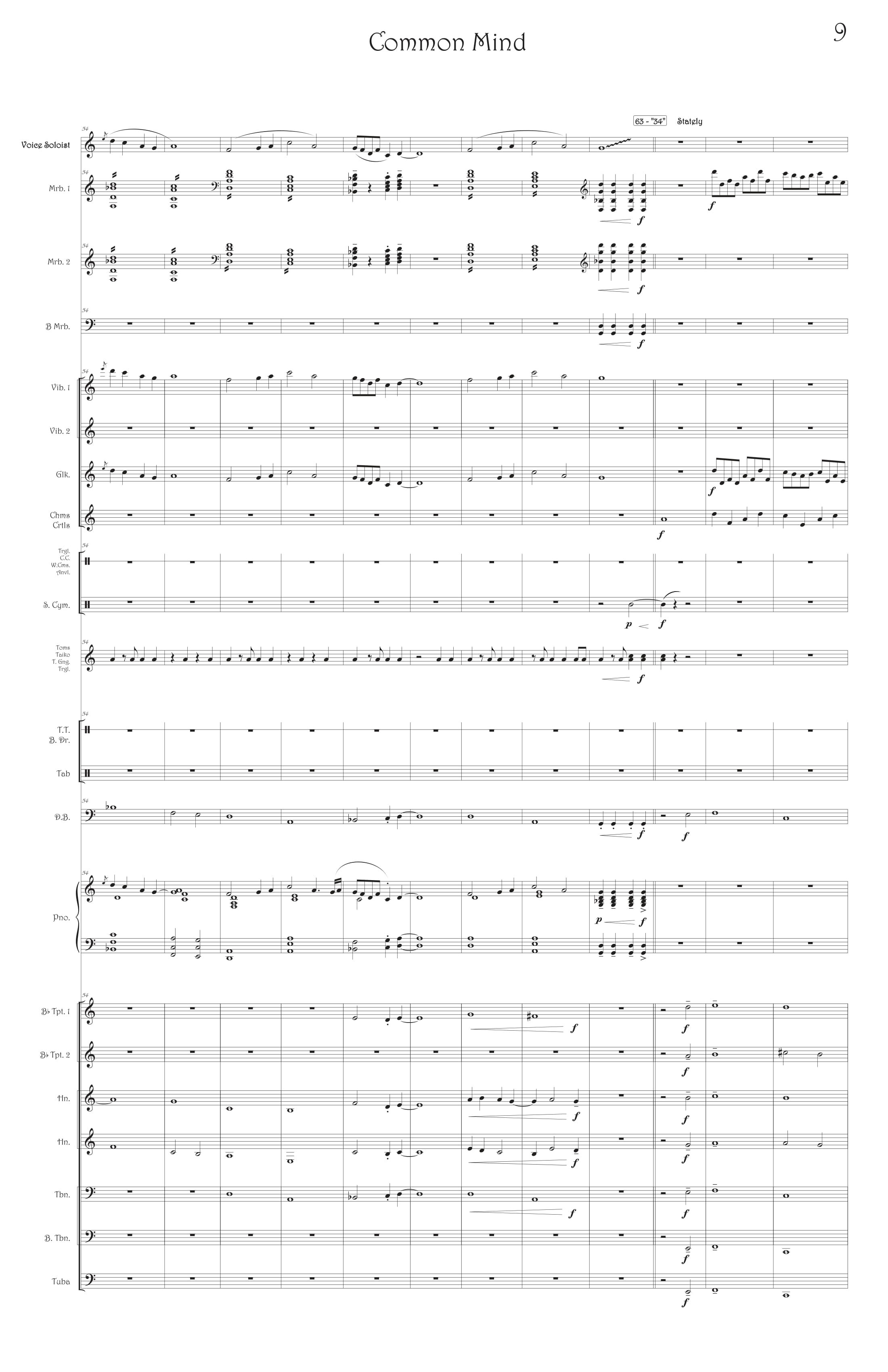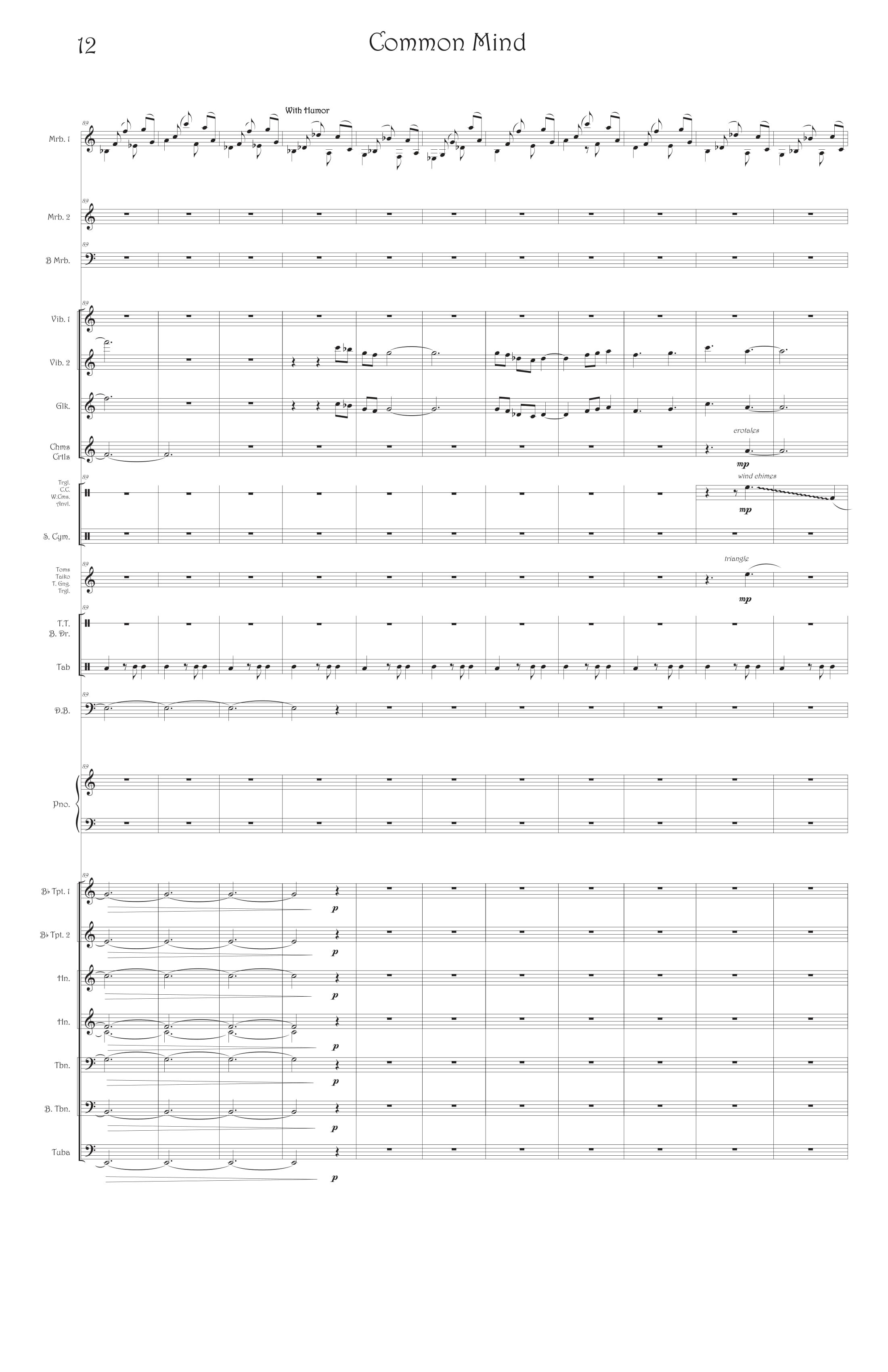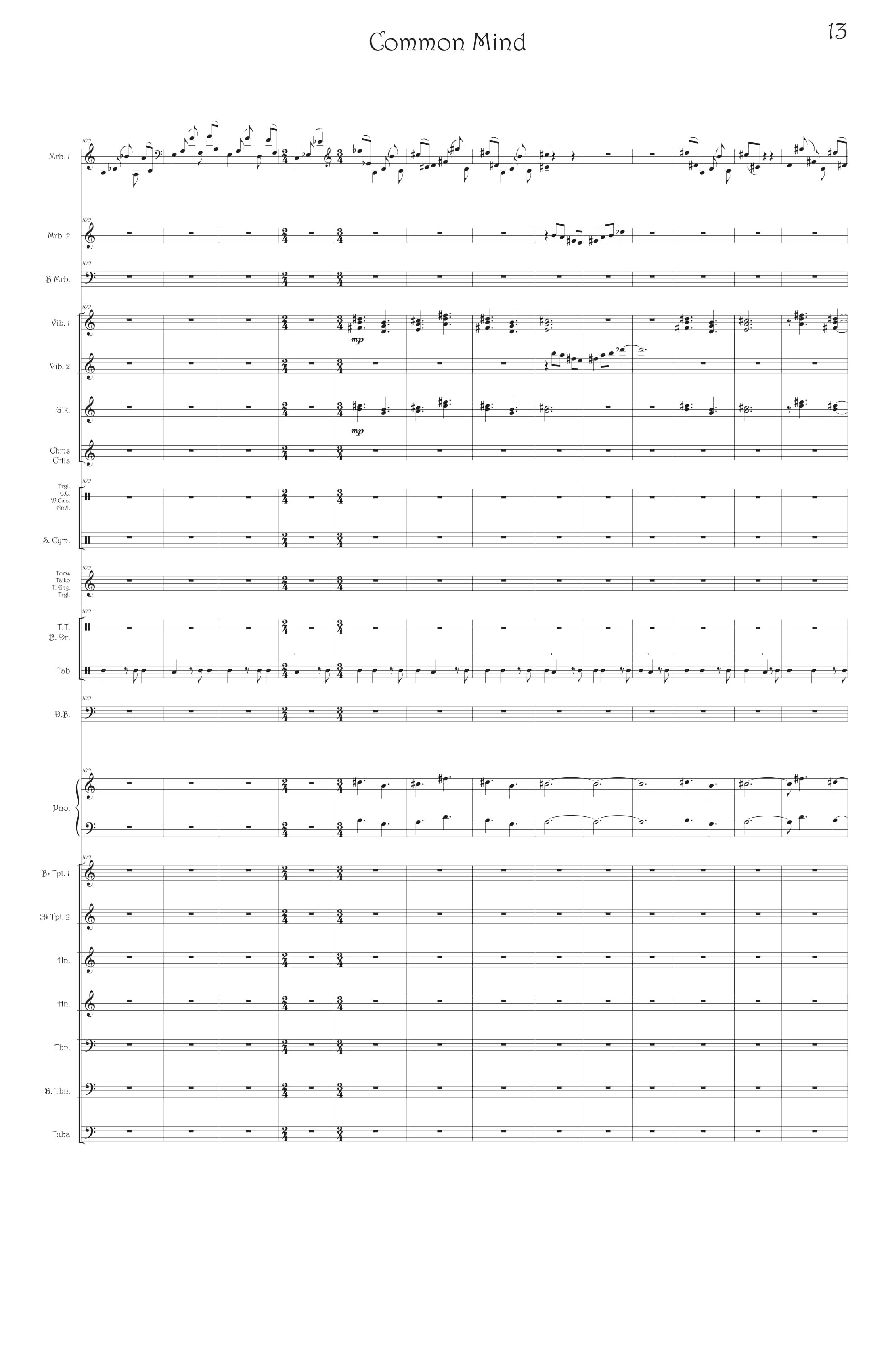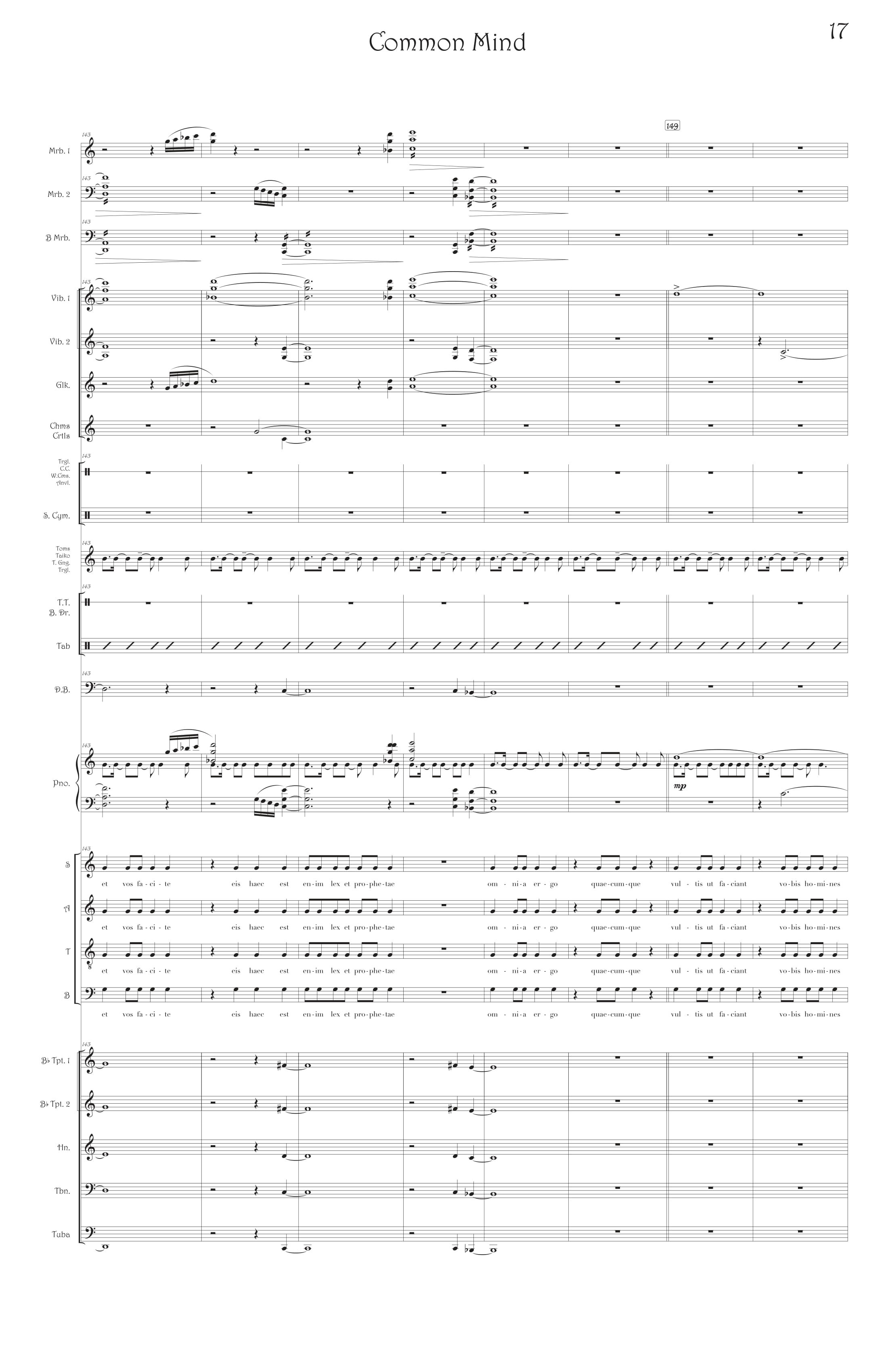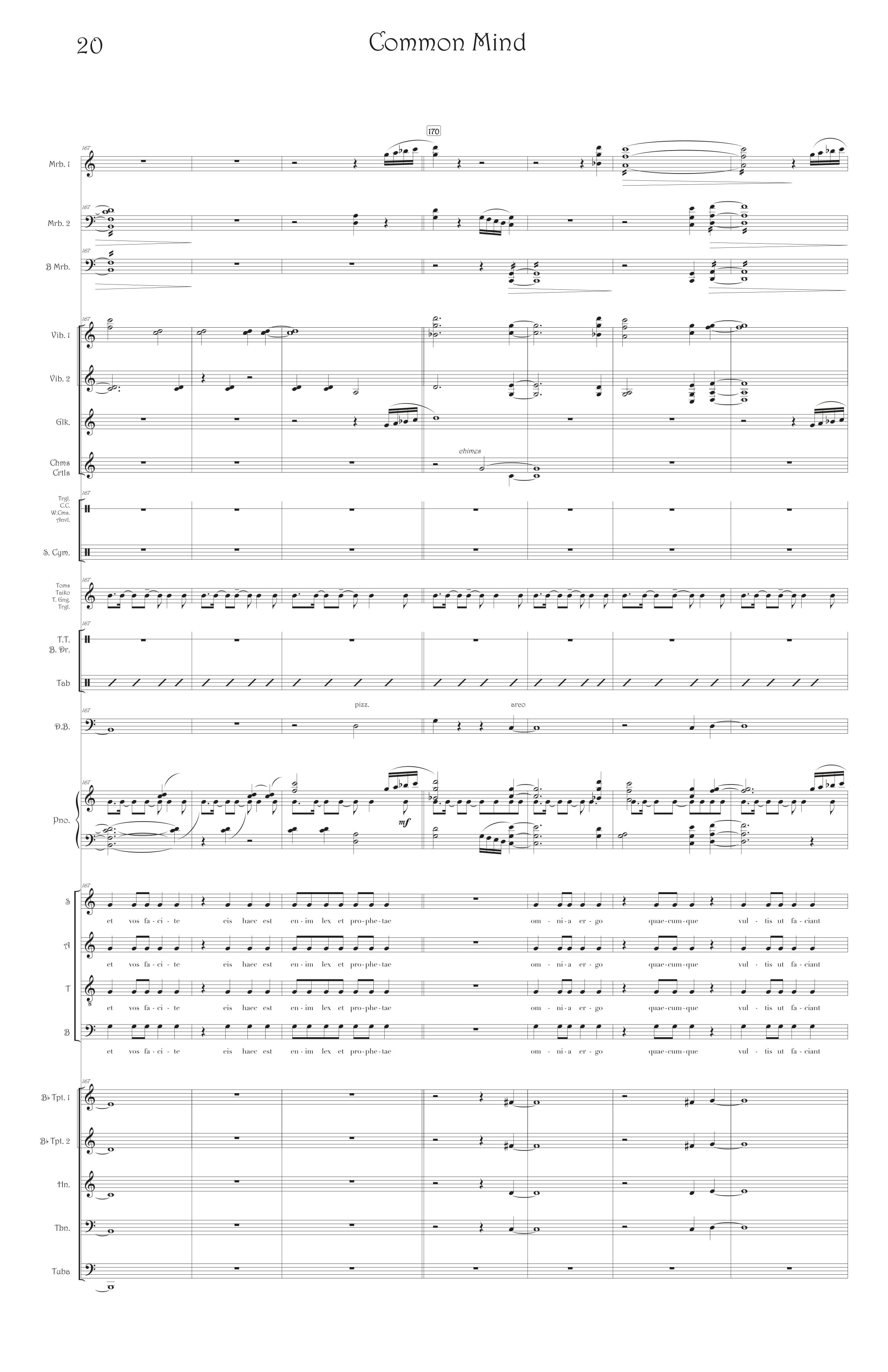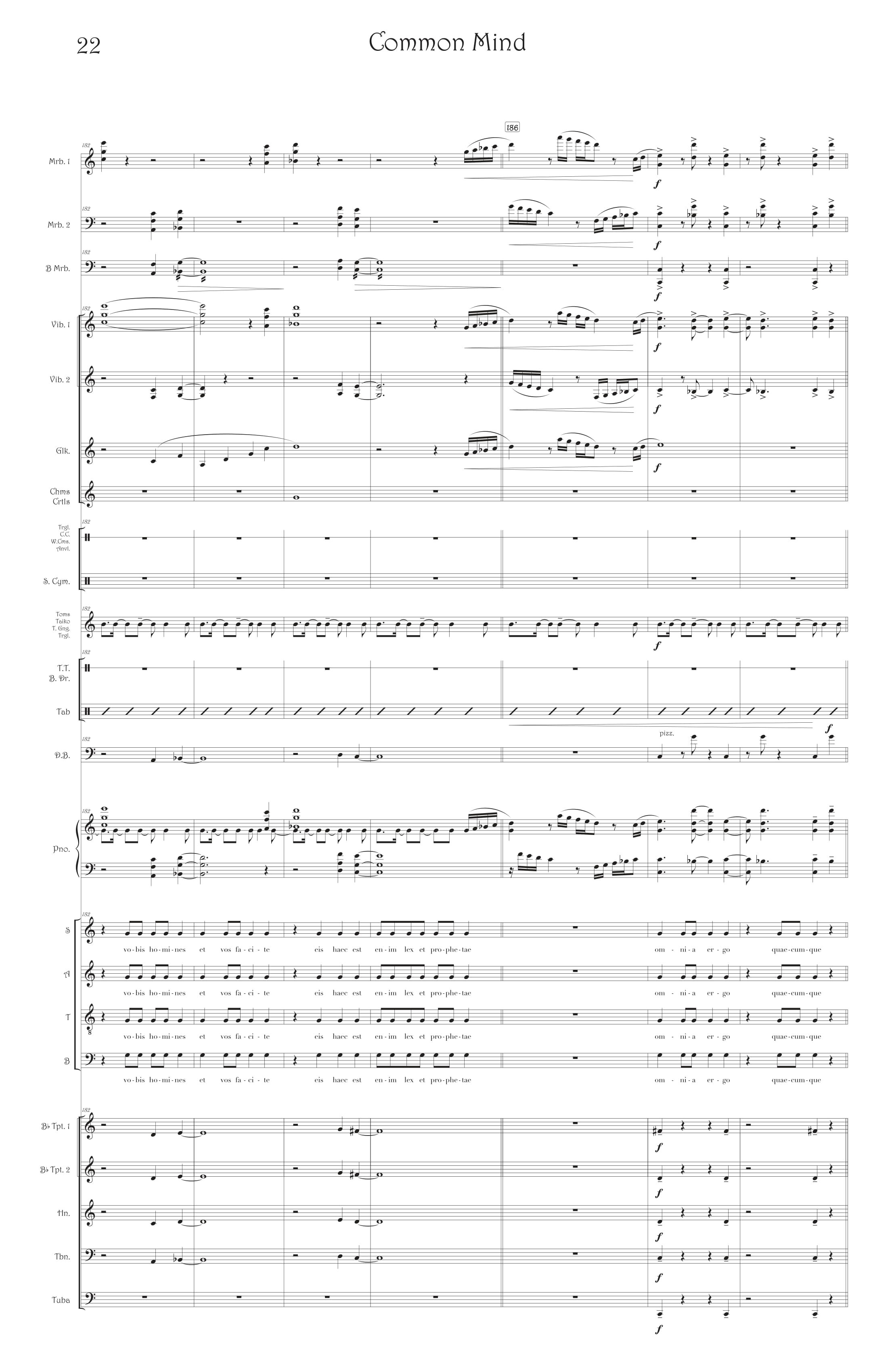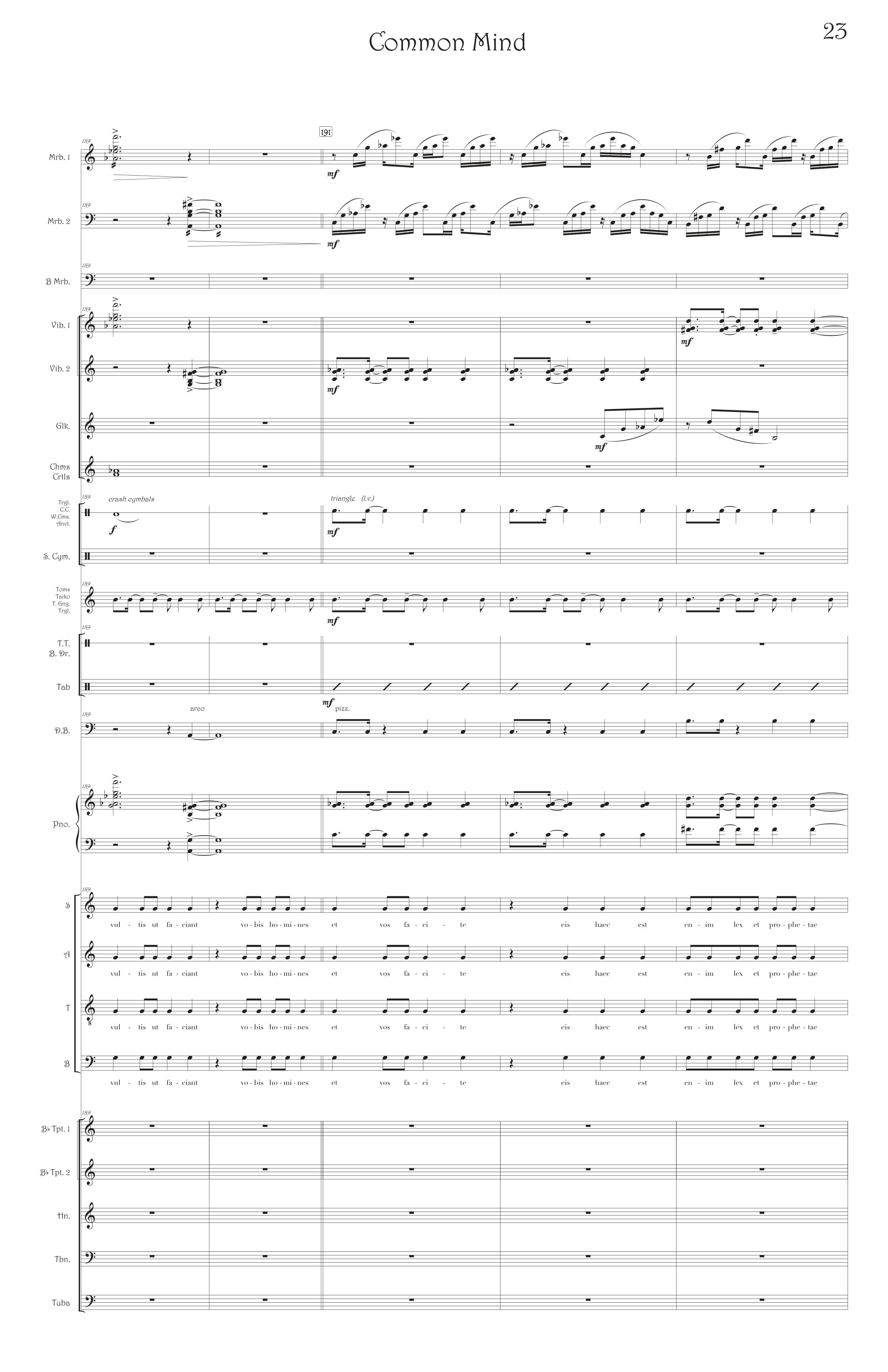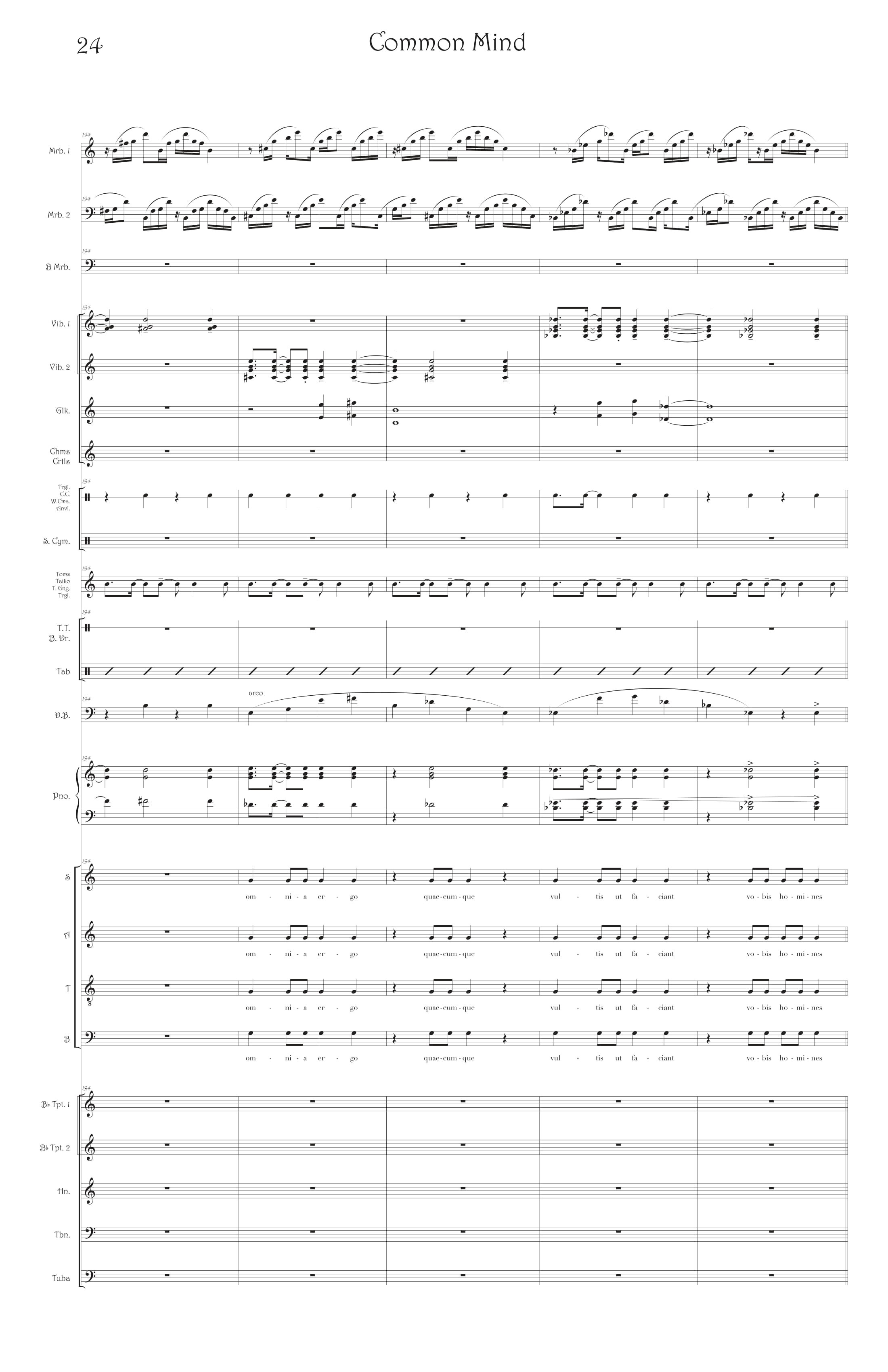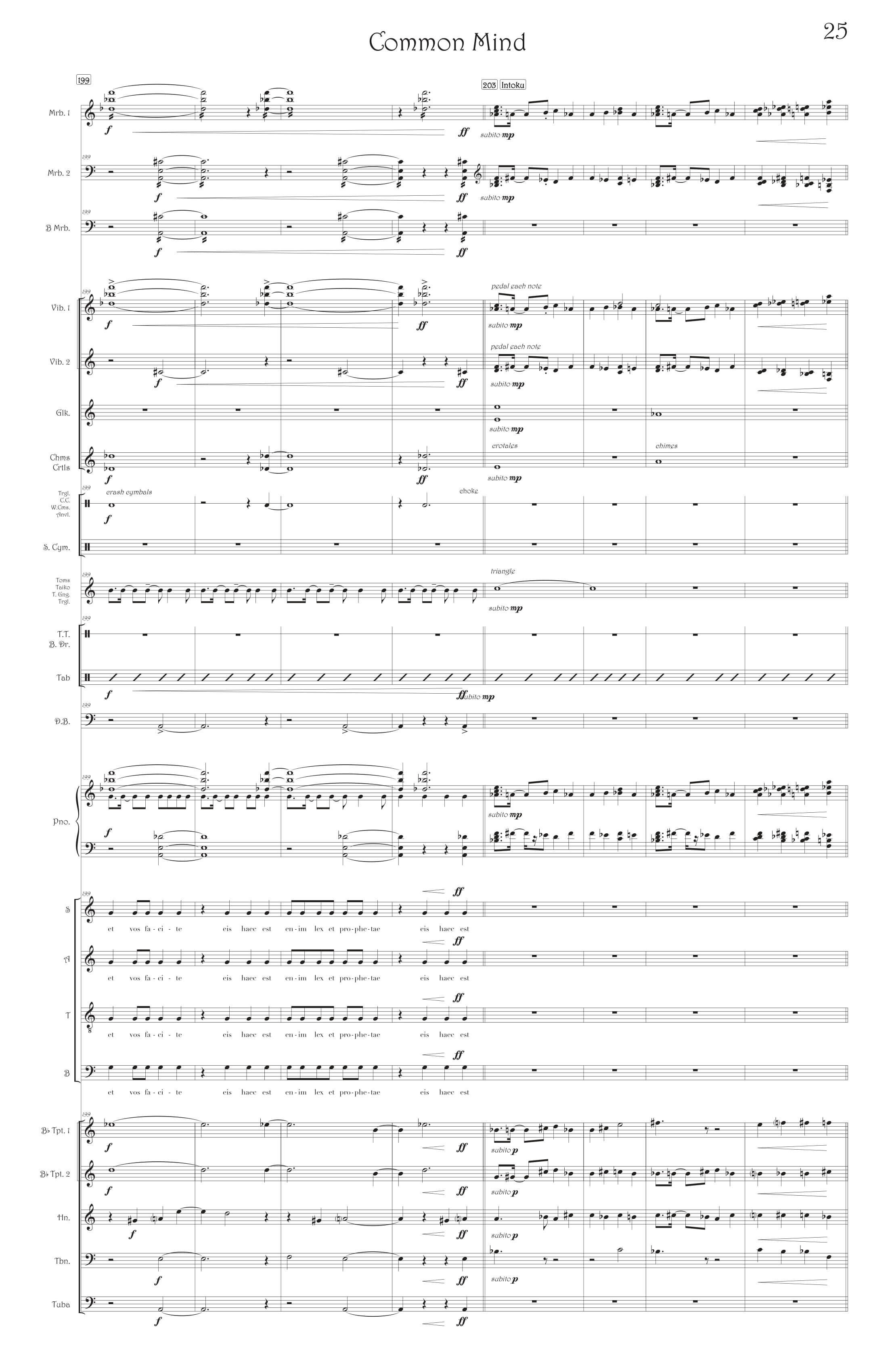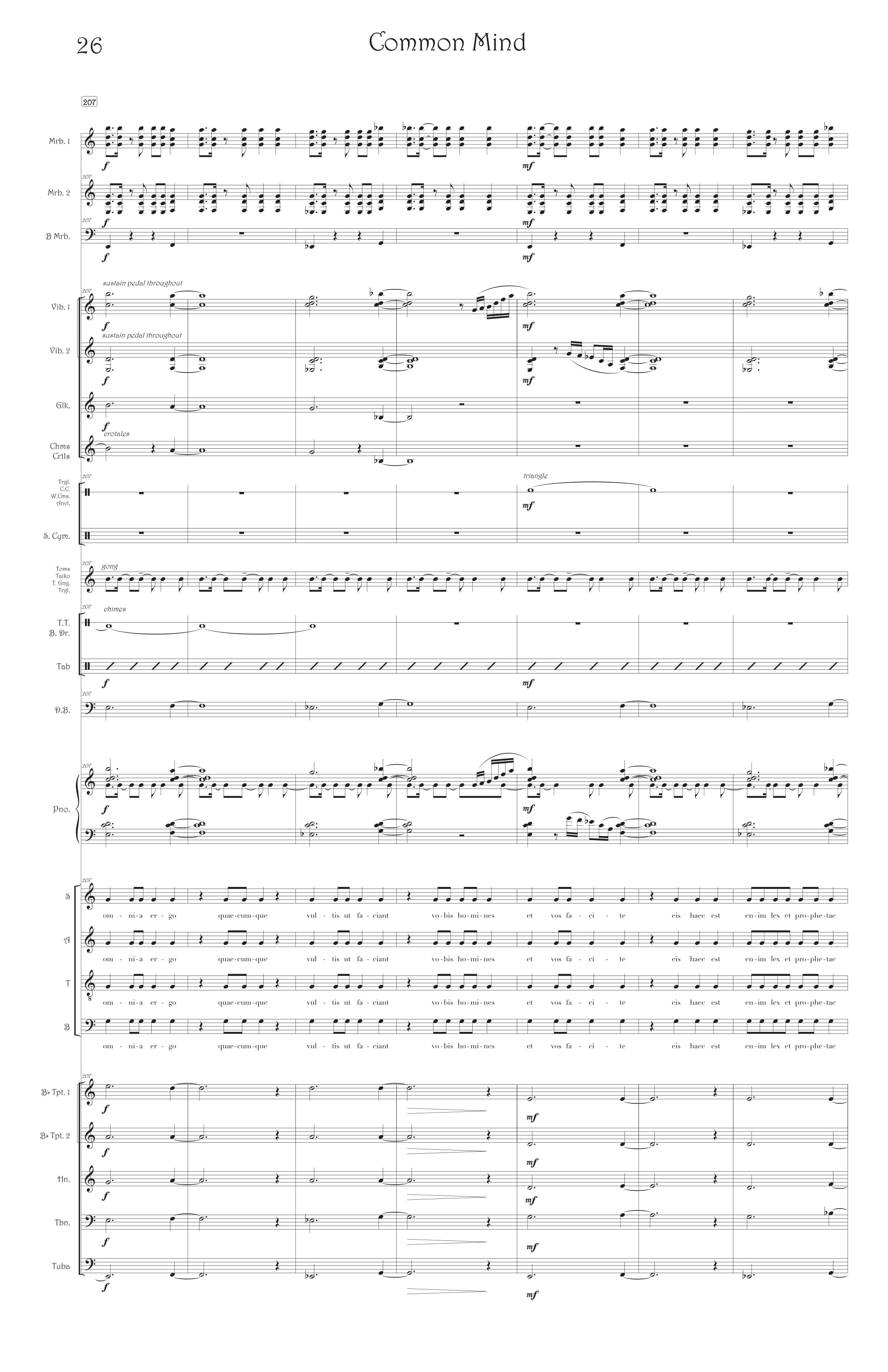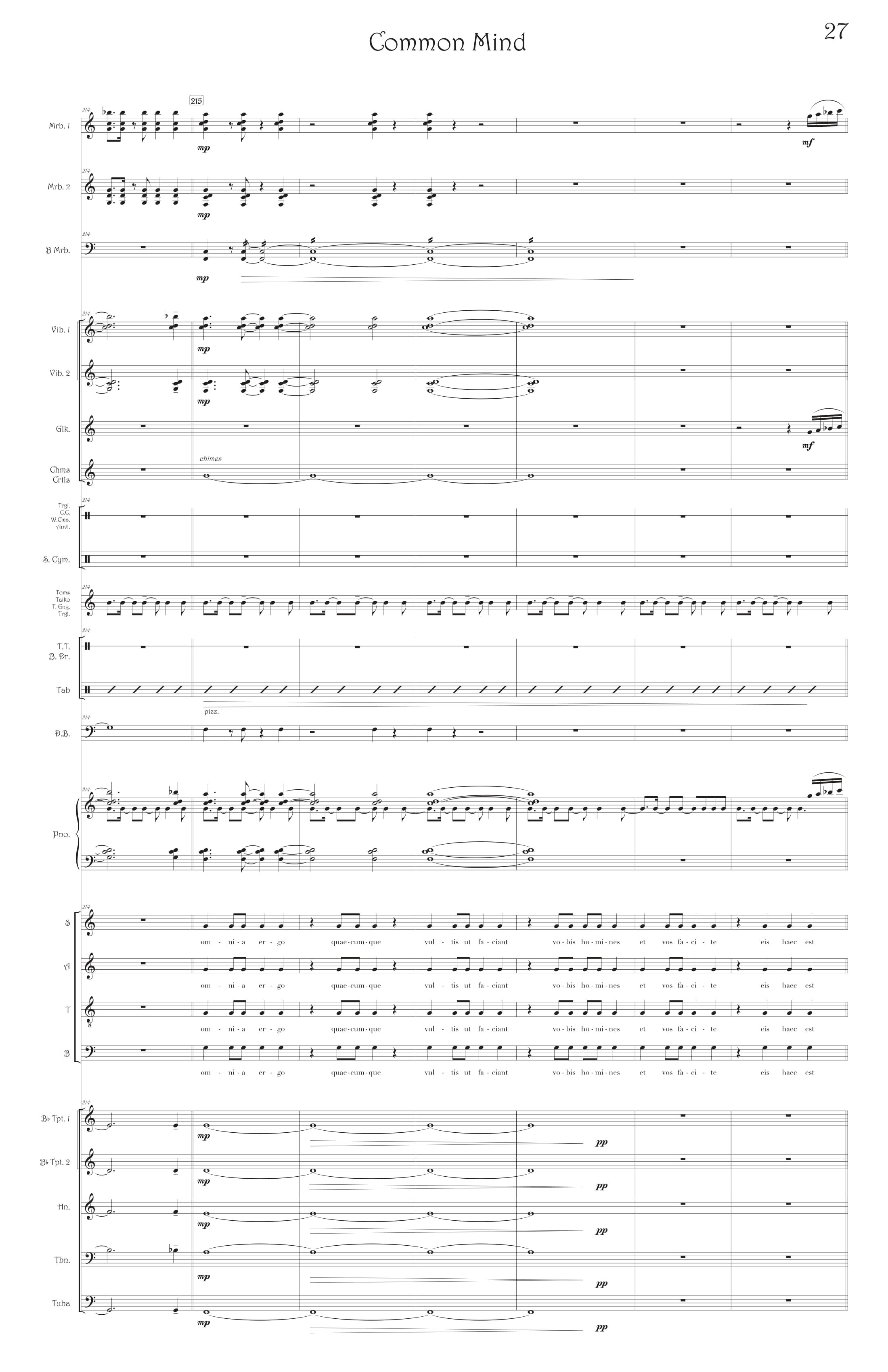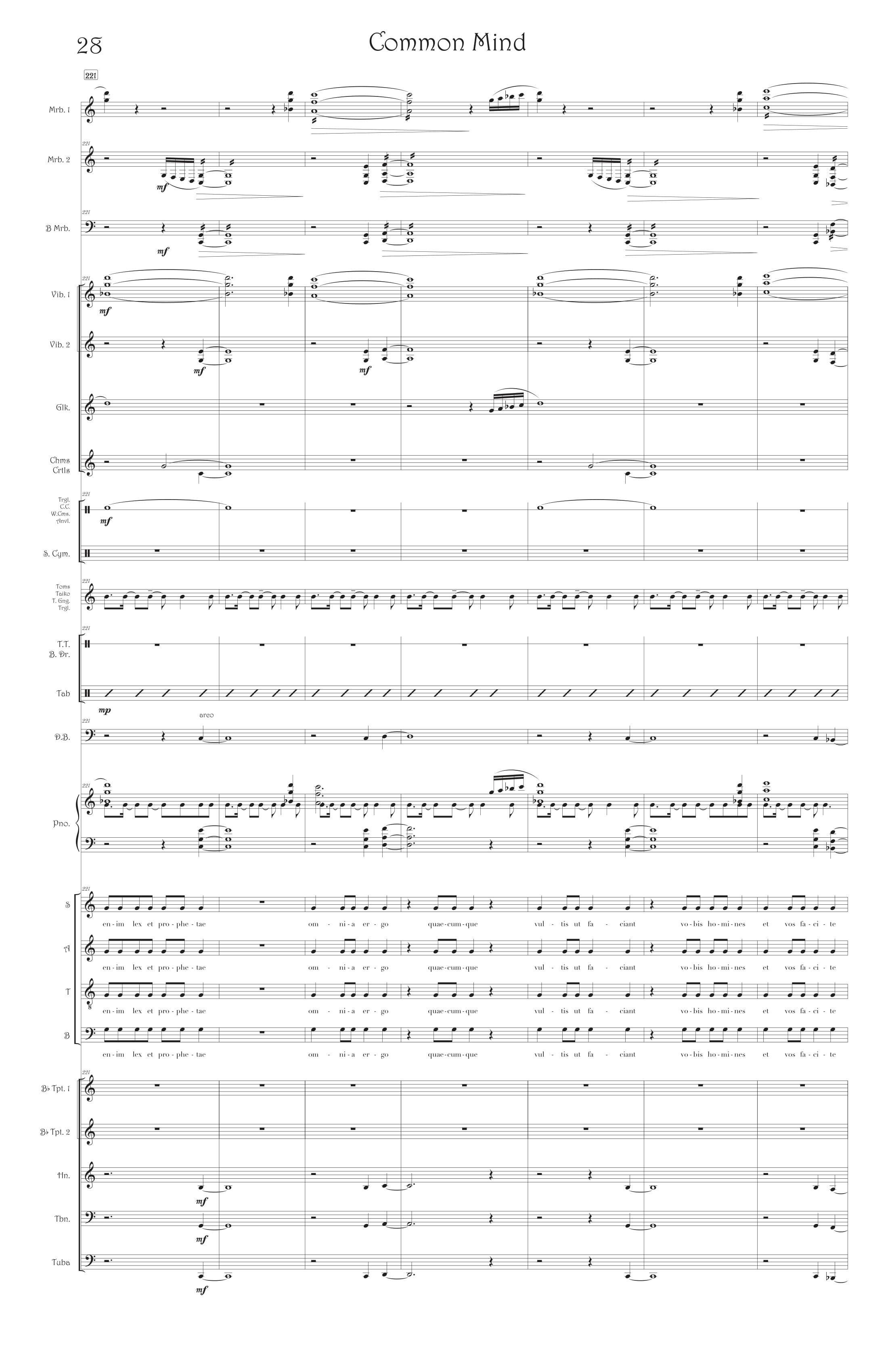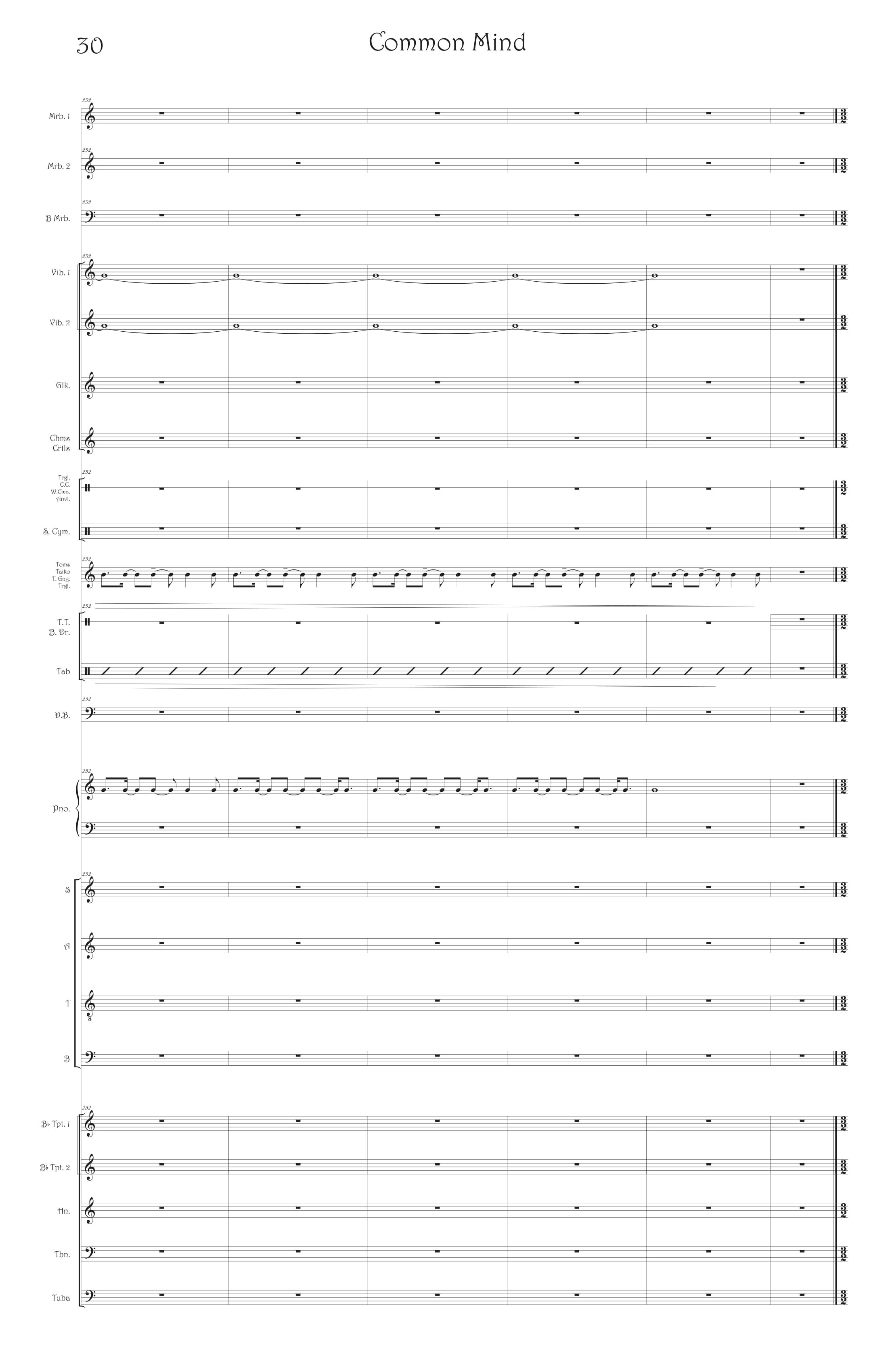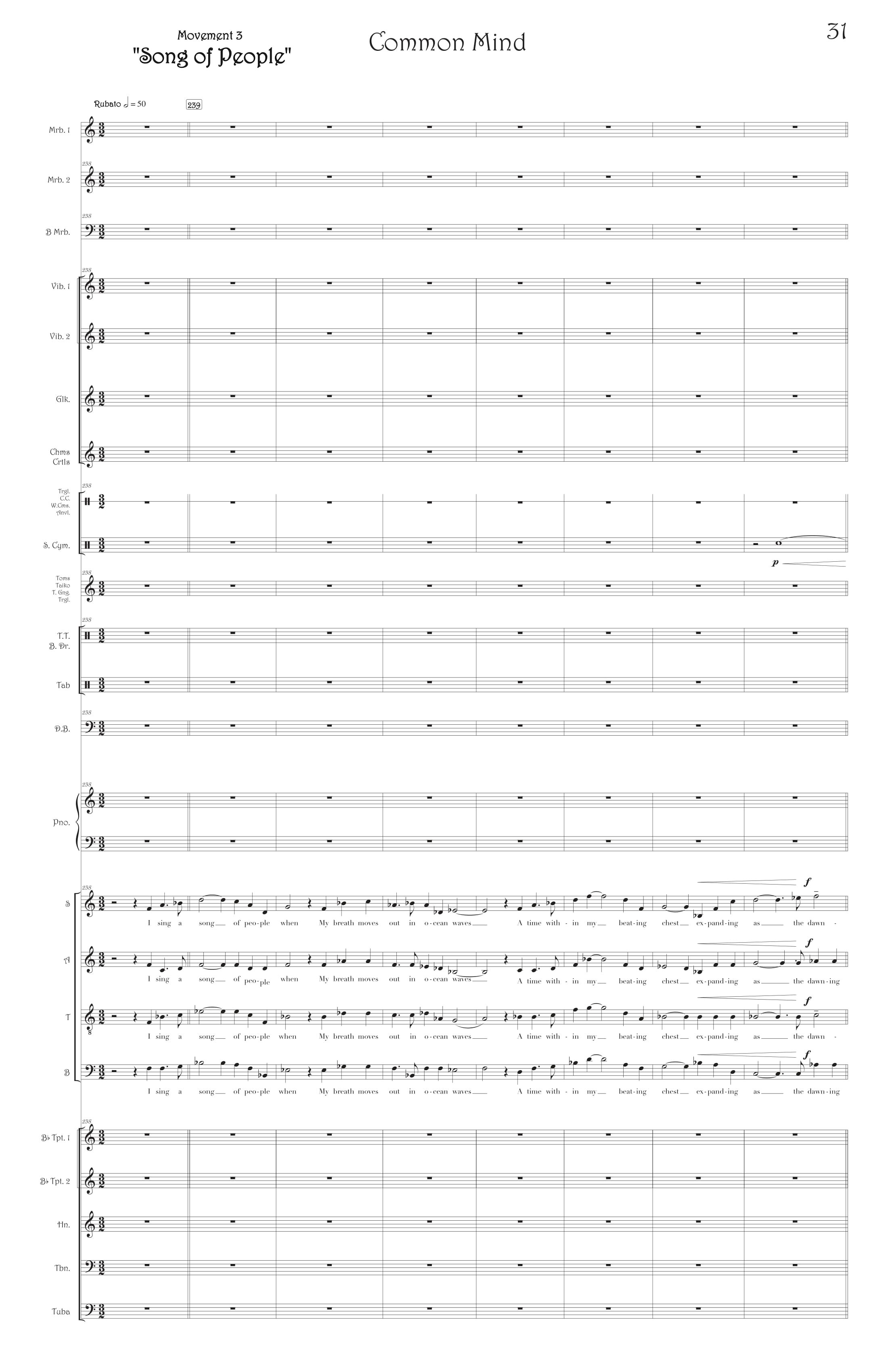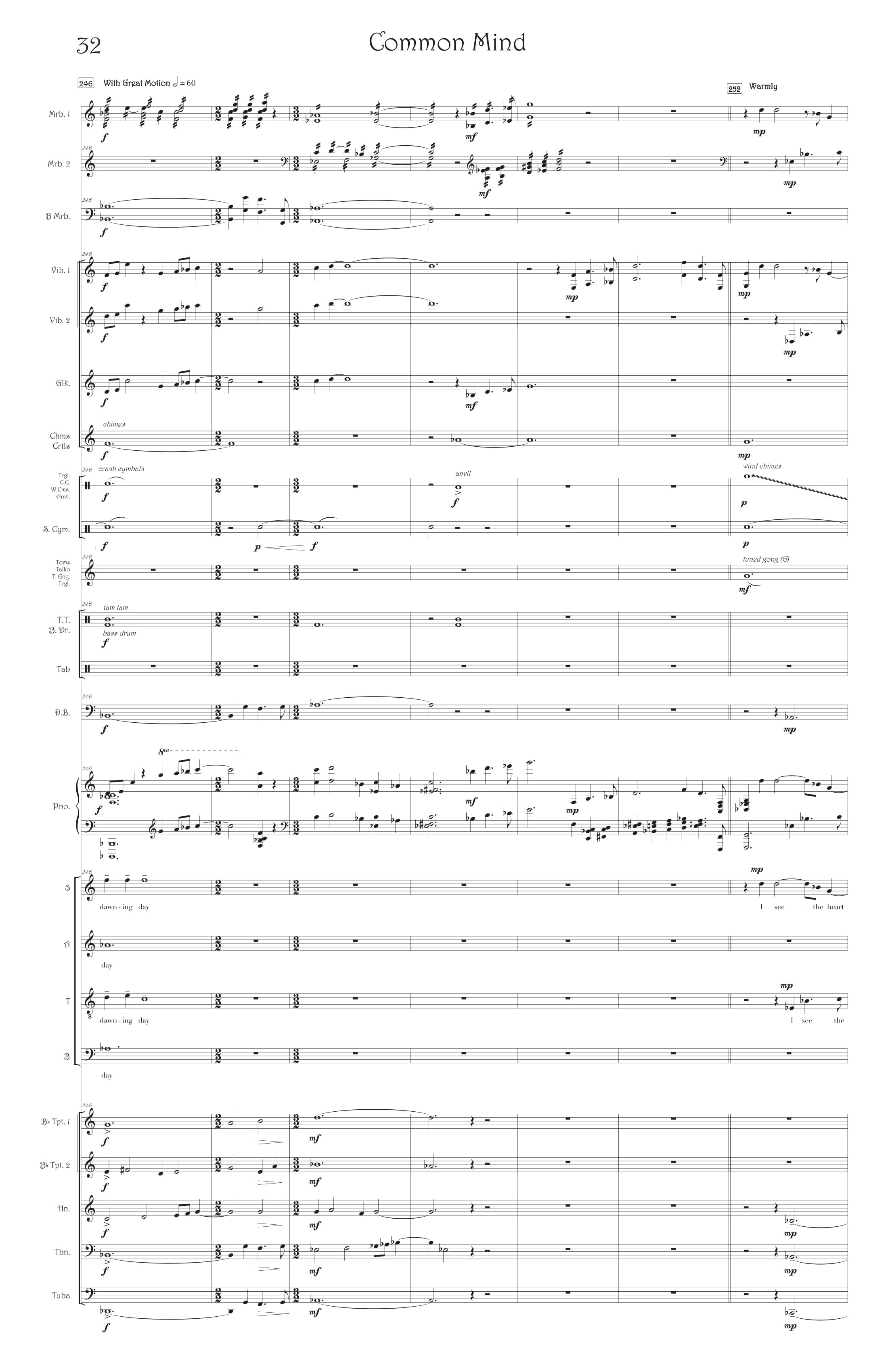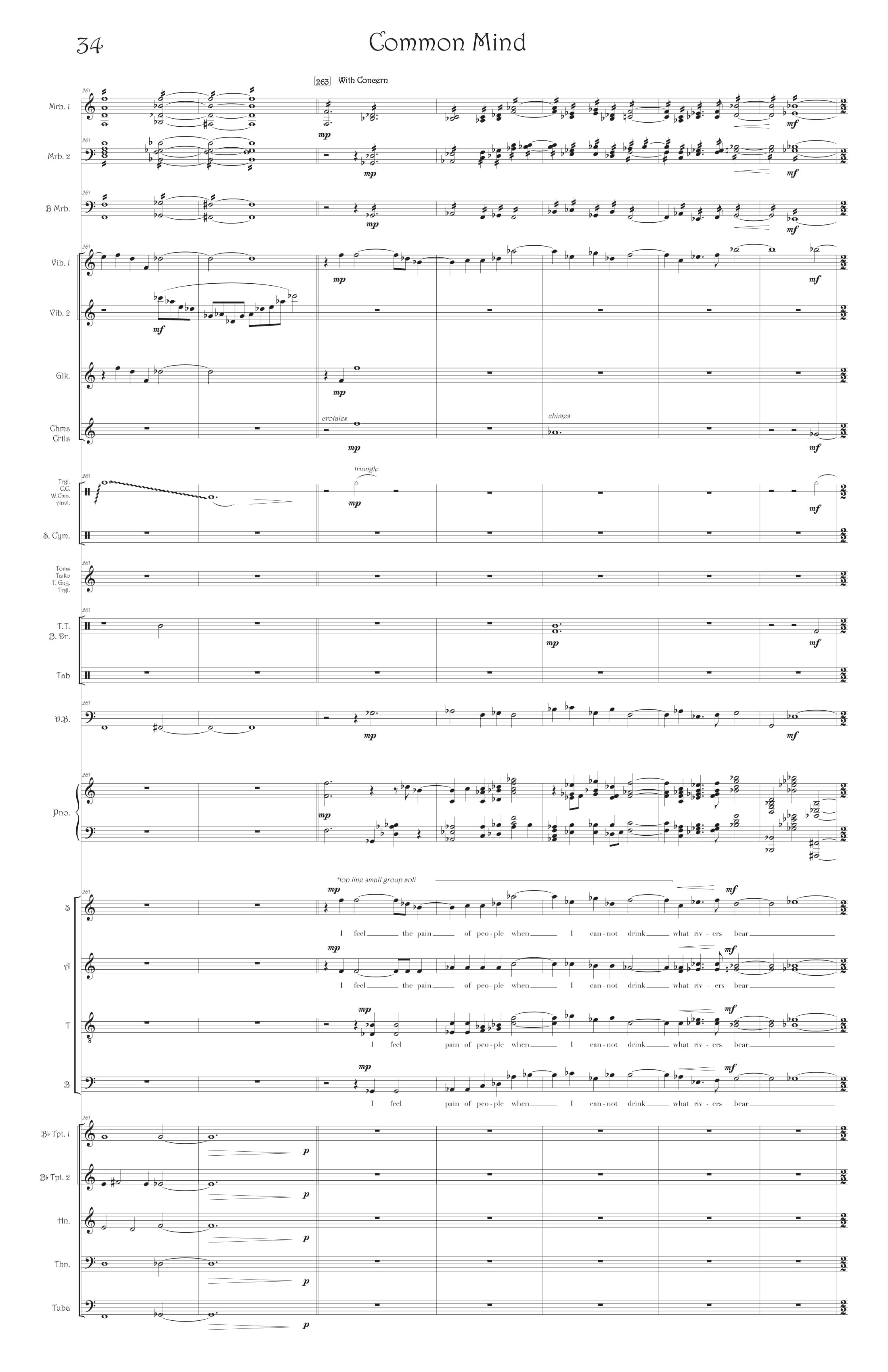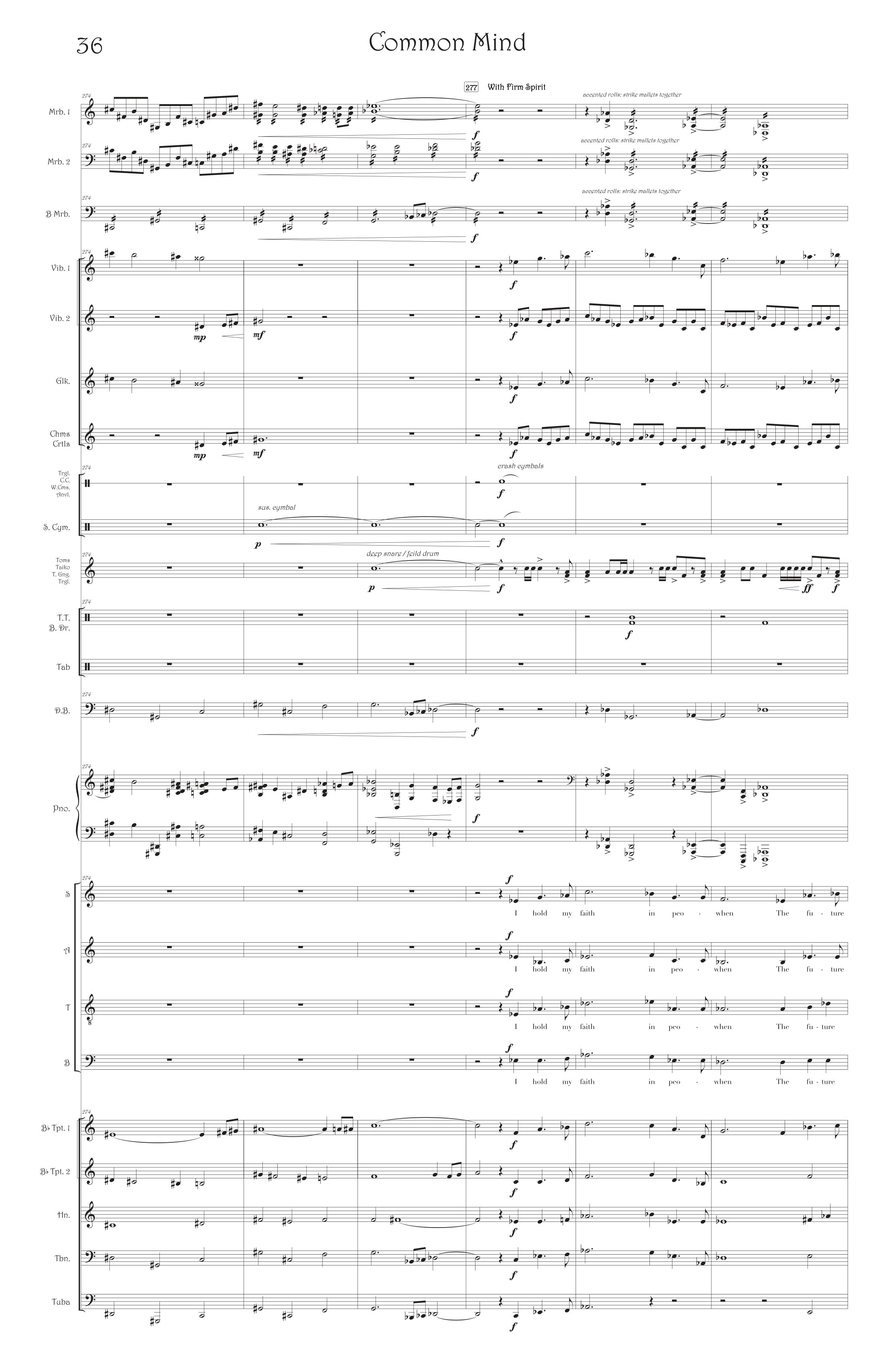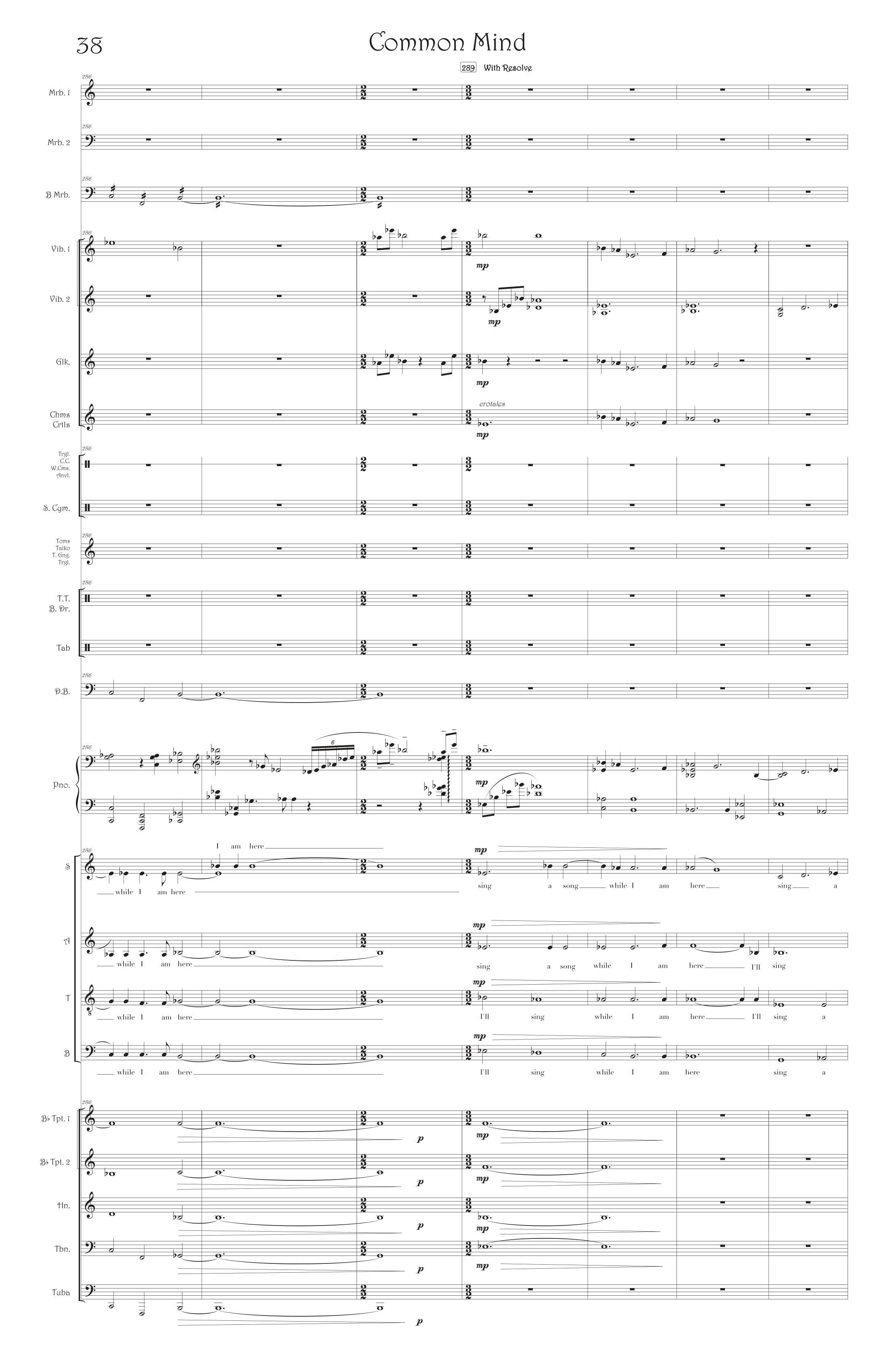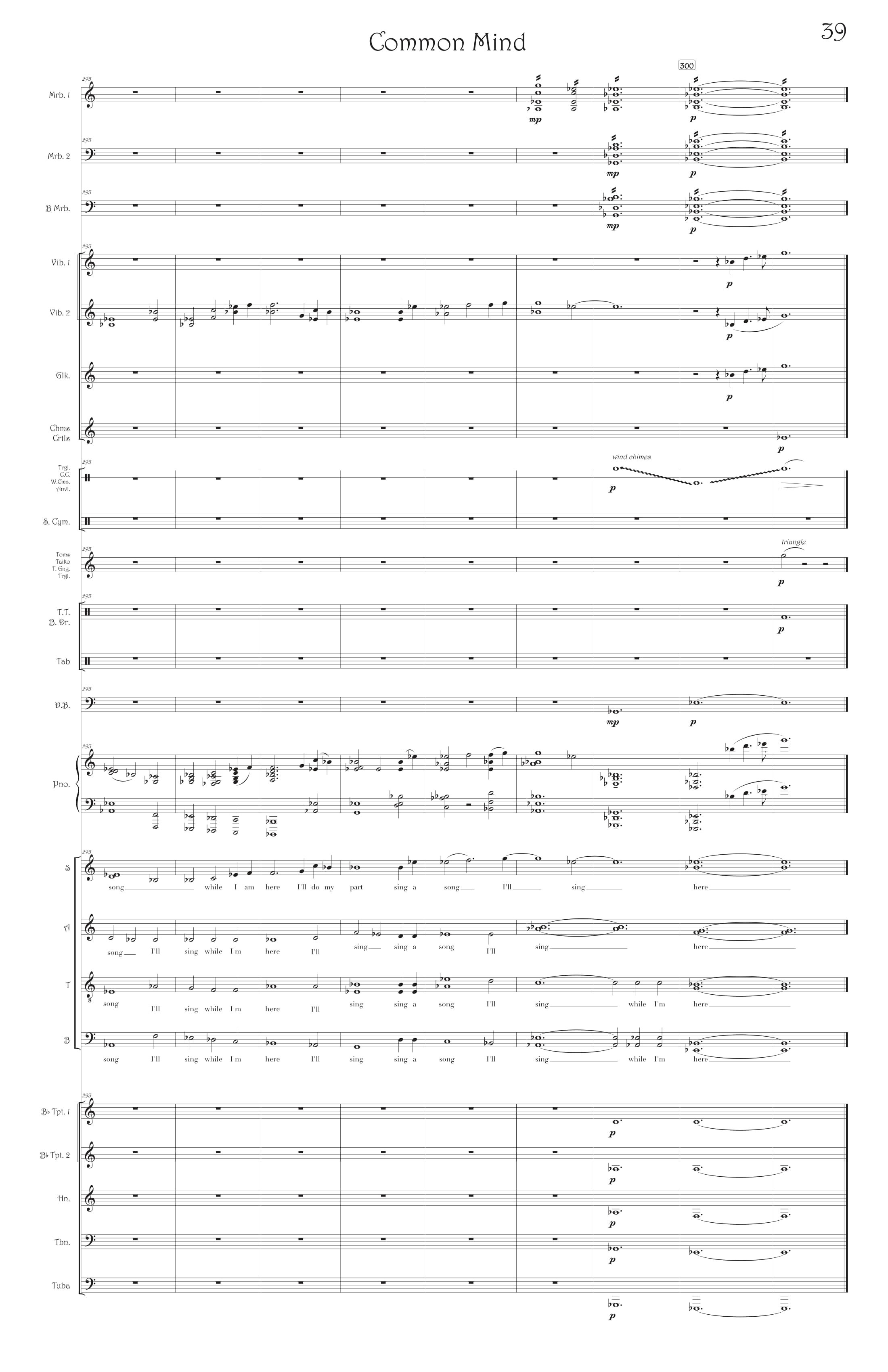Common Mind
By: Jon D. Nelson
“Common Mind” cover painting, oil on canvas
“Common Mind“ - World Premiere:
Performed by Wisconsin Youth Symphony Orchestras, Madison Youth Choirs, and guest performers
Page through the score below, or click for a DOWNLOADABLE SCORE
About “Common Mind“:
Common Mind generally deals with the notion of respect at varying scopes through three movements beginning with respect for oneself, expanding to respect for others, love and one’s relationships, then finally broadening to our respect for humanity altogether and anything that is bigger.
People often remark over the sense that life passes us by faster and faster as we age. To a five-year-old, one year represents 20% of what they know as “life” altogether. To someone who has fifty years, the same amount of time represents just 2% of their larger sense of what “life” has been. Are we actually all experiencing time and consuming “life” on varying scales side by side? Are we actually accelerating toward the point where one lives on as memories within the minds of living people?
VIDEO - Movement 1: “Blink of an Eye”
Featuring: Robert Rockman - dance/choreography, Todd Hammes - tablas, Megan McCrumb - solo voice
Movement 1: “Blink of an Eye”
Movement one, “Blink of an Eye”, more specifically deals with one’s respect for the time they have to live, tracing experiences and discoveries along the way portrayed by a single male dancer. It may be interesting to imagine our perception of the passing time in the shape of a Fibonacci spiral, the famous natural shape found in shells, animal horns, even spiral galaxies like the Milky Way, all of which are governed by Da Vinci’s “golden ratio”, aka Phi. When you trace the Ficonacci sequence mathematically, any value in the sequence is a sum of earlier values; perhaps we might similarly observe that a person’s consciousness and identity at any moment stands as a result of their prior experiences and memories. In drawing this connection, “Blink of an Eye” is timed out in phrases that begin very short and very dense, which grow longer and more spacious, precisely measured according to values of the Fibonacci Sequence. Interruptive percussive hits mark the onset of each new value in the sequence, and each of these valued sections of the movement are made to symbolize a certain age. As the “big bang” at the downbeat of this movement symbolizes the beginning of a life, the piece develops through these metaphorical years exploring different musical colors associated with the different levels of youthfulness and maturity. As these notions of “Fibonacci-shaped life” may entertain curiosity in theoretical physics, wonderments over the nature of the universe, this movement took shape as something of a tribute to the late Stephen Hawking, one of the most well known theoretical physicists of all time. The movement ends at the Fibonacci value, 55, the number of years that Hawking lived miraculously with ALS.
Movement 2: “Golden Rule“
Movement two, “Golden Rule”, employs the well-known phrase: “treat others as you yourself would like to be treated.” The phrase shows up in texts associated with virtually every world religion and philosophy, functioning as a humanitarian constitution simply asking for respect. As two dancers navigate the complexities of a romantic relationship, singers are gradually entering the stage while chanting Matthew 7:12 in Latin, which is precisely the golden rule. In unison with this chant on a static G, percussive instruments originating from many different cultures on earth support the singers. All the while, an alto saxophone soloist dances around this static chant presenting musical commentary on the developing relationship portrayed through dance.
“Golden Rule” utilizes an antiphonal ensemble which functional communicatively throughout the movement the compositional technique, inversion, as the static chant on G functions as an axis of symmetry through which musical gestures are projected. It is interesting to note that many musical shapes, chords, and melody lines, when inverted produce sounds of seemingly opposite emotion. When a joyous and bright C major triad is projected through the static G into its inverted form, a sorrowful G minor triad results. Many other, more complex musical shapes are inverted in this fashion to theoretically produce emotionally opposite pairings of sound which are each assigned to just one side of this antiphonal ensemble. The result is an ensemble split into left and right halves of the stage, which jointly communicate “sacrifices” and “gratitudes “ in the portrayed relationship. The entire second movement is symmetrical, note for note.
Throughout “Golden Rule” the static G through which all gestures are projected may symbolize the “judgement” of society and embodies the sometimes-stifling effects of societal expectations on behavior and conduct in a relationship. For one passage of the movement labeled “Intoku” in the score, this static G disappears and for this brief time the rest of the ensemble, while still symmetrical, does not need to remain functional and harmonious with the otherwise unyielding G. Intoku is a Japanese word that means “good done in secret”.
VIDEO - Movement 2: “Golden Rule“
Featuring: Drew Whiting - alto saxophone, Todd Hammes - tablas, Robert Rockman - dance/choreography, Isabel Larson - dance
Drew Whiting: alto saxophone soloist
VIDEO - Movement 3: “Song of People“
Madison Youth Choirs
WYSO Percussion Ensemble
WYSO Brass Quintet
Movement 3: “Song of People“
Movement three, “Song of People” begins with a feature of the entire choir freshly positioned on-stage, presenting an original text collaboratively written with Dr. Jeanne Leep and Megan McCrumb. The text aims to creatively express the urgency of addressing climate change in four stanzas, which recapitulate the broadening notions of respect conveyed by the entire three-movement work. The movement ends with a warm call to action, accompanied by the sounds of many bells collected by Nelson’s Grandmother, Mary Proctor. The sampled bells originate from dozens of countries and every livable continent on Earth.
“Grandma Mary’s Bells“

